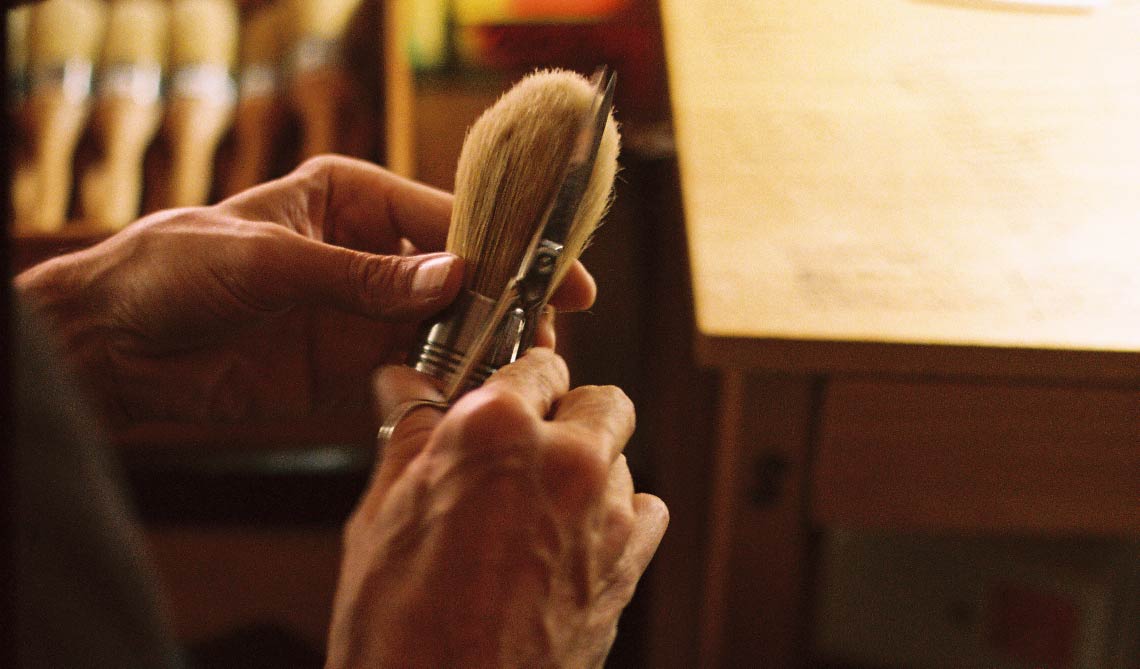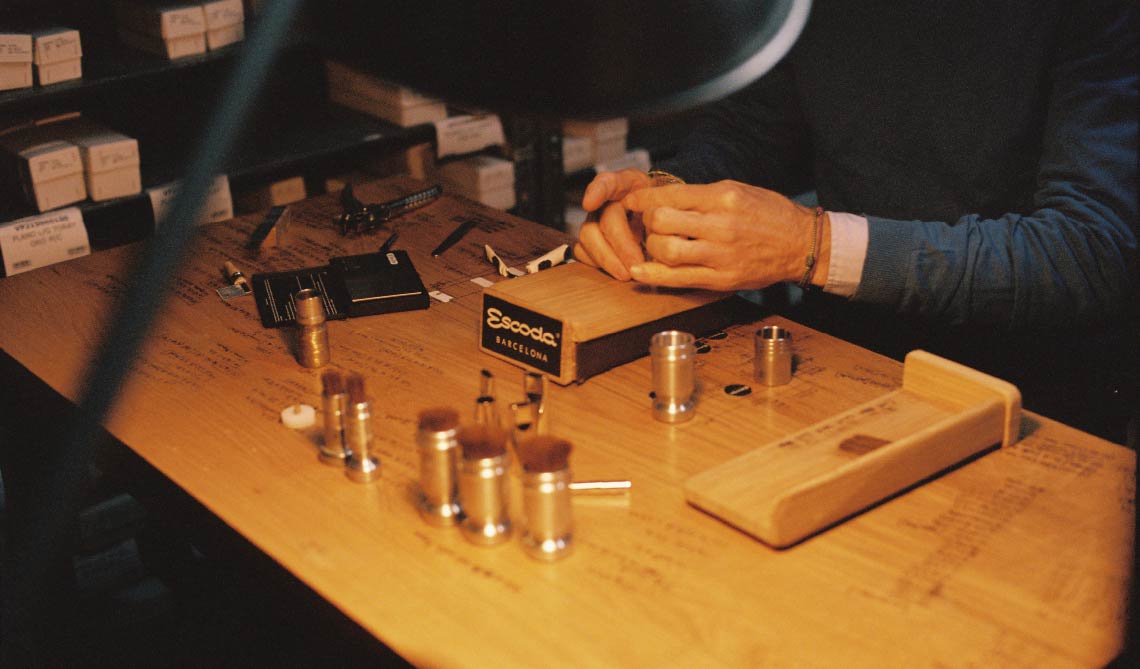NEWS
Último EvolutionARTIST SETS
SERIES
-
Último Evolution
NEWS
ACCESSORIES
SÈRIES
-
Ópera - Oil and acrylic
-
Óptimo - Oil and acrylic
-
Óptimo - Watercolour
-
Aquario - Watercolour
-
Aquario Gold - Watercolour
-
Arco - Oil and acrylic
-
Artesana - Watercolour
-
Último - Watercolour
-
Barroco - Watercolour
-
Barroco - Oil and acrylic
-
Bravo - Watercolour
-
Bravo - Oil and acrylic
-
Chronos - Oil and acrylic
-
Chronos - Watercolour
-
Clásico - Oil and acrylic
-
Evolution - Watercolour
-
Marfil - Oil and acrylic
-
Modernista - Oil and acrylic
-
Perla - Watercolour
-
Perla - Oil and acrylic
-
Prado - Watercolour
-
Primera - Oil and acrylic
-
Primera - Watercolour
-
Reserva - Oil and acrylic
-
Reserva - Watercolour
-
Saturno - Oil and acrylic
-
Versàtil - Watercolour
-
Versàtil - Oil and acrylic
-
Vintage - Oil and acrylic
-
All
-
Jansen Chow
-
Ale Casanova
OIL AND ACRYLIC
How it’s made
#thebrushmakers
In order to make the best possible brushes, for us it is extremely important to be able to use the finest fine hairs such as Marta Kolinsky and its Tajmyr variety, the Little Gray of Russia, the Bou Ear from Europe, the U.S., and Canadian Hills, the Tiers of China and the Mongolian Peasant. Since the beginning, for Escoda, superior materials create a superior brush.
We are also gradually incorporating synthetic fibers into our product catalog. Currently, we have eight types of artificial fibers with different colors, diameters, nerves, and durability. Artificial fibers that cannot be distinguished from natural hair by touch or sight.
Using the best raw materials allows us to create brushes that have become a recognized and loved tool not only for watercolorists, oil painters, or acrylic painters but also for ceramists, porcelain decorators, odontologists, restorers, glaziers, etc.
We make each brush here at Escoda by hand, one by one, and the process is unique because of all the traditions behind it. Our brush makers are all experts and have years of training.






We make each brush here at Escoda by hand, one by one, and the process is unique because of all the traditions behind it.
In order to create the bottom of a brush, flakes of hair (natural or artificial) are wrapped in nickel or 14 karat gold and covered with a thin layer of metal. The top of the brush is the handle, a piece of wood that is engraved with the brush’s number, brand, name of the series, type of hair, and city of manufacture.
The next step is getting both sides together. The triple crimp, exclusive to Escoda (we have it trademarked) will secure the crimp in the handle. The last operation is another Escoda exclusive that involves a secret recipe. It consists of simultaneous ironing and drying of the bundle of hairs using a natural product. This way we get the hairs to maintain the shape that we have given them when making the brush.
Our brush-making process allows us to proudly refer to ourselves as #thebrushmakers, turning tradition into art.
You may also be interested
